“This post contains affiliate links, and I will be compensated if you make a purchase after clicking on my links.”
Last Updated on March 19, 2023
As a Great Dane fur parent, you must understand and know that the breed is at risk of suffering from diseases that are common to large dog breeds.
Having a sound understanding of common Great Dane health problems will help you take care of your dog and ensure that they live a healthy life.
To help you out, we have listed some of the most common Great Dane health problems, their symptoms, preventive tips and treatment options. Continue reading below to find out!
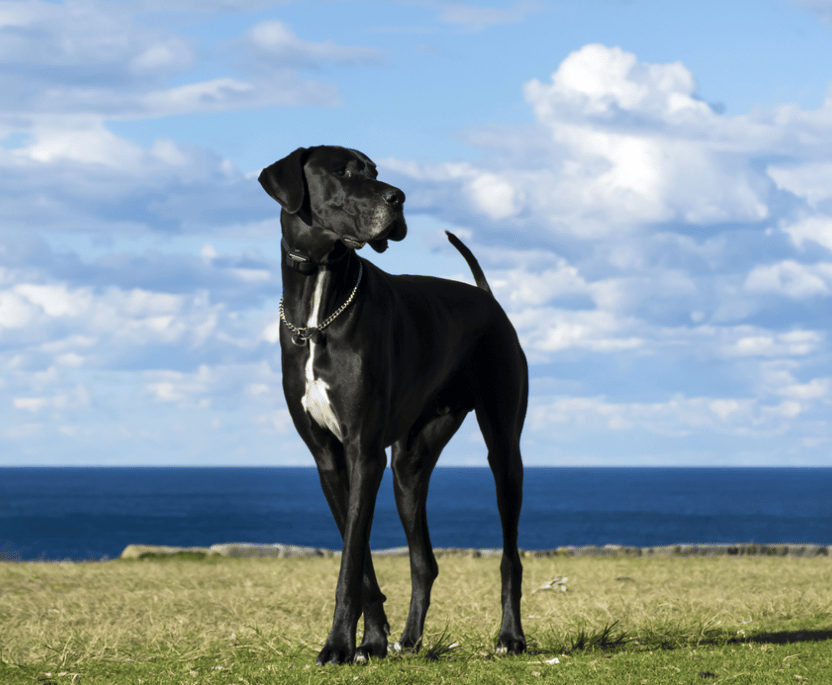
Most Common Great Dane Health Problems
The Great Danes are prone to a number of diseases. Some of the diseases can happen more frequently than others. Making it all the more important to understand common Great Dane health problems.
See below list of 6 of the most common Great Dane health problems:
1. Bloat
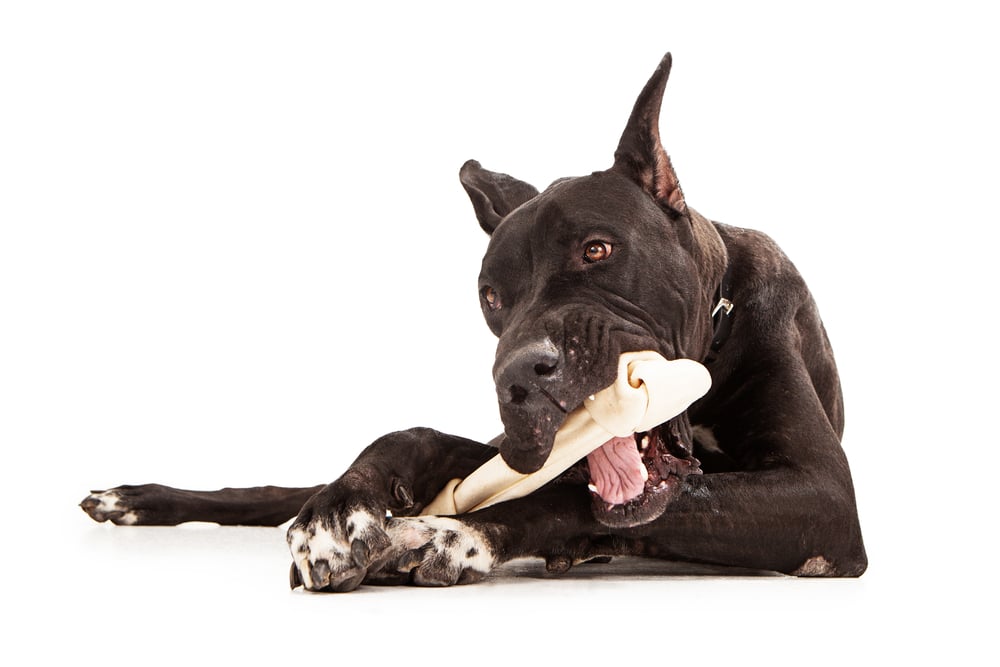
Bloat is one of the most common Great Dane health problems. It is a health condition where the dog’s stomach fills with gas, food or fluid and expands. And according to certain researches, 42% of Great Danes develop this problem during their lifetime and 13% die from it.
When left untreated, bloat becomes or Gastric dilatation and volvulus (GDV) where the stomach expands and twists in itself. It causes the blockage of both the entrance and exit of the stomach. And it results in other dangerous problems like decreased blood circulation to the heart and other major organs.
What Causes Bloat?
Despite numerous researches, the primary cause of Bloat is not known.
However, through the years, the following factors have contributed to its cause:
- Eating too fast
- Overeating
- Eating from a raised food bowl
- Drinking plenty of water in a short amount of time
- Stress or anxiety
- Playing or exercising immediately after eating
Symptoms of Bloat
Bloat can happen at any stage in a Great Dane’s life. And it can progress very quickly. Recognizing the early signs of this Great Dane health condition will help save your dog’s life:
- Restlessness
- Excessive drooling
- Swollen and hard stomach
- Anxiousness
- Pacing
- Trying to vomit or retching
As bloat gets worse, the following signs will also show:
- Labored panting or breathing
- Pale gums
- A rapid heartbeat
- Weakness or collapse
Prevention
While preventing bloat is not 100% possible, there are a number of tips you can follow to reduce the chances of it happening to your Great Dane.
- Do not use a raised or elevated food bowl.
- Help them slow down their eating with slow feeder bowls and devices.
- Do not encourage play time or exercise before and after meals.
- Feed them smaller portions instead of one or two large meals a day.
- Talk to your dog’s veterinarian regarding bloat.
Treatment
If you get even the slightest idea that your Great Dane might be bloating, take it to vet right away. If your regular vet isn’t open, seek immediate veterinary attention somewhere else. Do not attempt to treat the problem yourself. Over the counter medications will not help, and could only make the situation worse.
Addressing the issue right away by seeking veterinary attention will increase your Great Dane’s chances of survival.
The recommended treatment for bloat varies. They can be somewhere between putting a tube into your dog’s throat to release gas or a surgery called gastropexy. It will all depend on the damage caused.
Do not forget that post-treatment care, physical examinations and visits to the vet will be necessary after the treatment is done.
2. Hip Dysplasia
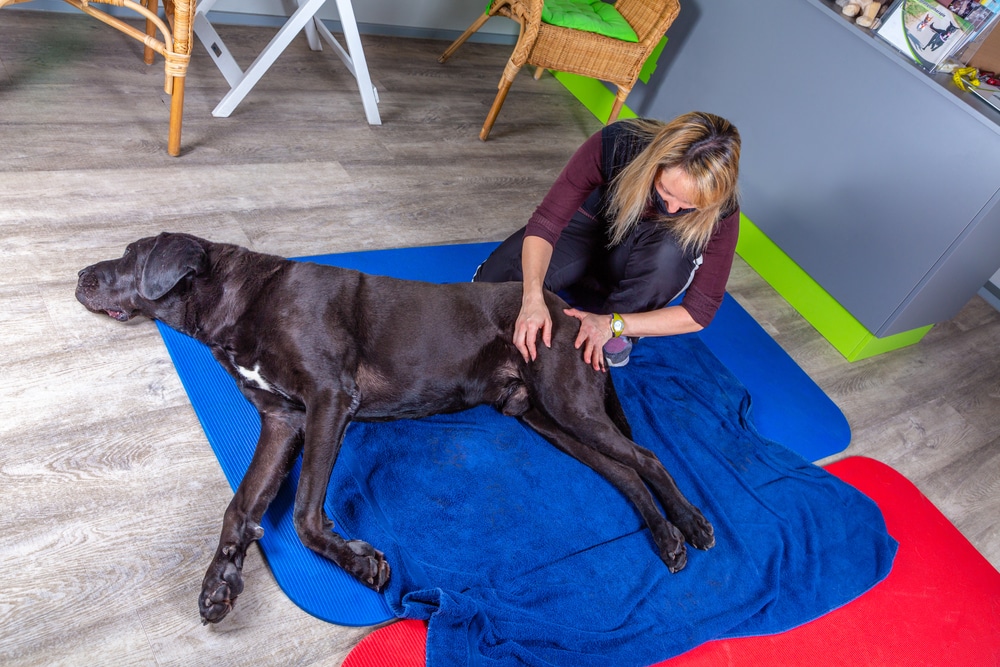
Hip dysplasia is a common developmental health condition found in large dog breeds like the Great Dane. It occurs when a dog’s hip joint doesn’t develop properly and the dog can’t use its hind legs properly.
The hip joint consists of both a ball and a socket joint. For dogs with hip dysplasia, the ball (head of the femur) and socket joint (acetabulum) don’t grow at equal rates. This results to looseness and instability of the joint, mobility issues and osteoarthritis.
It is one of the many Great Dane health problems that occurs during a Great Dane’s younger years. However, many dogs don’t show any clinical signs of hip dysplasia until they’re older.
What Causes Hip Dysplasia?
One major cause of hip dysplasia is genetics. If one or both of your Great Dane dog’s parents have had hip dysplasia, then the chances of your dog having the same problem is a lot higher.
However, genetics is not the only cause for hip dysplasia. It can also develop due to different factors such as:
- Improper diet
- Environment
- Growth rate
- Muscle mass
- Hormones
This is why it’s important for Great Danes to have a proper and balanced diet starting from puppyhood. Overfeeding them from a young age will encourage a lot of growth problems because unlike small or average-sized breeds, their growth rate is slower.
Symptoms of Hip Dysplasia
As mentioned above, hip dysplasia is hereditary. Which means you must learn your canine’s family history from the breeder you are buying or adopting the Great Dane from.
Furthermore, since symptoms can also develop during their adulthood, you have to stay alert for any early signs of the problem. See below list of hip dysplasia’s signs and symptoms:
These symptoms can happen during puppyhood (younger than 18 months):
- Limping in one or both of its hind legs
- Bunny hopping (this is when a dog uses his back legs to hop and not run)
- Grating from the hips when moving or getting up
- Shifting of weight to the front legs
- Decreased physical activity
- Noticeable pain when using hind legs
Aside from the above mentioned symptoms, the following signs can also show during adulthood (older than 18 months):
- Loss of muscle mass in one or both of its back legs
- Increased shoulder muscles (as they start to use more of these instead of their hind legs)
- Difficulty getting up, climbing stairs, running or jumping
The earlier you catch any symptoms of hip dysplasia, the better chances of it getting treated. If you ever see any signs, visit your vet right away.
Prevention
Hip dysplasia cannot be prevented in all cases because it is a hereditary disease. However, there are still ways to prevent it from becoming an issue, or reducing its impact to your Great Dane’s life significantly. See list below for preventive measures:
- Know your Great Dane’s lineage. As mentioned above, the chances of your dog having hip dysplasia is higher when one or both of its parents have had it. If you know this in advance, then you can take further preventive measures to reduce its impact on your Great Dane’s life.
- Ensure a proper and balanced diet. Making sure that your dog’s bones and joints are healthy should start when your dog is young. This can be achieved with an appropriate and balanced diet.
- Avoid or minimize painful motions. Do not let your dog do actions that will further make the problem worse. In this case, running, jumping around or climbing the stairs must be minimized or avoided.
- Visit the vet regularly for checkups. Your dog’s vet will know best on how to handle the situation. The vet can also help you detect early signs of the problem.
Remember, even when all preventive measures are taken, a dog can still have hip dysplasia due to its genetics.
Treatment
Treatments for hip dysplasia depends on the severity of your Great Dane’s condition and amount of discomfort. Other factors you have to consider for the treatment are the dog’s age and lifestyle. Here are treatment options available for hip dysplasia:
- Weight loss and management. The heavier your Great Dane is, the more pain it’ll experience. So, it’s important to make sure they lose and maintain a healthy weight.
- Anti-inflammatory and pain medication. The vet might prescribe drugs to help with swelling (if there’s any) and pain caused by hip dysplasia. However, medication is not a long-term solution and can affect your dog’s liver as they grow old.
- Physical Therapy. This is a great way to exercise your Great Dane. It is designed to avoid damaging movements while building and strengthening the legs’ muscles.
- Orthopedic Hip Braces. These braces provide support and stability and minimizes the pressure on dog joints. Furthermore, they are used for post-surgical healing or physical therapy. Note that hip braces are used to treat mild to moderate hip dysplasia only.
- Surgery. This is usually done as a last resort when abovementioned treatments no longer work for your Great Dane.
3. Dilated Cardiomyopathy
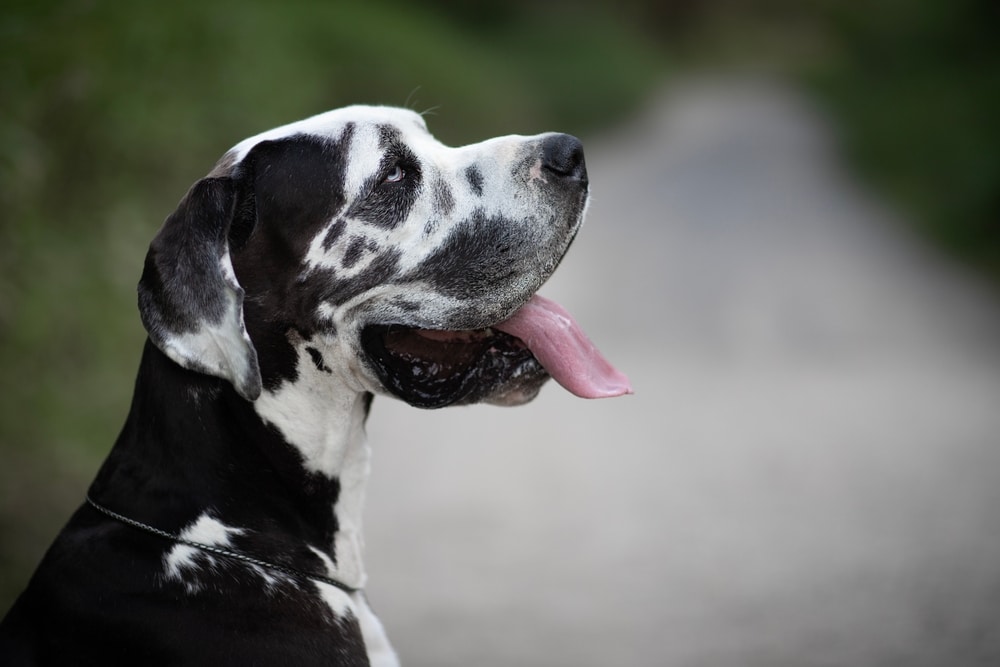
Dilated Cardiomyopathy or DCM is a type of heart disease in Great Danes where the heart muscles weakens. Thus, causing thinner heart walls and an enlarged heart. DCM in Great Danes has two common dangerous results:
- The inability of the heart to pump blood to the rest of the body which leads to a build up of fluid in the chest and abdomen.
- The inability to have a normal heart beat (dysrhythmia) and adequate blood circulation which may result in the Great Dane’s sudden death.
According to a Swedish survey, Great Danes are third on the list of dog breeds that die from a heart disease like DCM.
What Causes Dilated Cardiomyopathy?
Like other Great Dane health problems, the primary cause of DCM is still a subject of debate. However, a lot of factors seem to contribute to the development of the disease.
The biggest contributing factor is genetics. Like hip dysplasia, DCM can be inherited from the dog’s parents. Furthermore, it is one of the many Great Dane health problems that is prominent on other large dog breeds like the Boxer and the Doberman Pinscher.
Other contributing factors include nutritional deficiencies, low thyroid level, prolonged rapid heart rates and poor blood flow to the heart muscles.
Symptoms of Dilated Cardiomyopathy
Signs and symptoms of DCM are not the same for every Great Dane. But common signs include:
- Weakness
- Fainting spells
- Difficulty breathing
- Panting
- Coughing
- Fluid in the abdomen
- Lethargy
- Weight loss
Early signs of DCM are pretty difficult to detect. Great Danes with DCM are likely to appear normal or healthy and will not show any physical signs. This is because the body tries its best to keep the heart and the rest of the dog’s organs functioning even as the heart’s ability to function properly decreases.
Prevention
As mentioned above, early signs of DCM can be difficult to detect. However, as a preventive measure, getting an electrocardiogram (ECG) will help. This is used to asses the heart by recording the activity of the heart as it beats.
Another test your dog can undergo is called echocardiography. This test can detect whether your Great Dane’s heart muscle is moving at a normal pace and if the valves are pumping blood through the heart correctly. Furthermore, it can show the size of the heart and any defects like the enlargement of the heart’s walls.
Echocardiography is considered to be the most accurate and effective test for detecting and diagnosing DCM (or any heart disease) in dogs.
If you suspect that your Great Dane has DCM, it’s best to immediately seek veterinary care.
Treatment
There are no formal or proven treatment strategies for DCM. All suggested methods are carried out depending on the severity of the condition.
Available treatment options include:
- Therapy. If heart muscle changes are detected, appropriate therapies like oxygen therapy are done to slow down or reverse such changes.
- Diuretics and medications. If congestive heart failure develops, a combination of diuretics and medications are prescribed. All of these are used to support heart muscle contraction, to prevent fluid retention and stabilize heart rhythm.
- Supplements. If the Great Dane has underlying conditions like nutritional deficiencies, appropriate supplements are also prescribed.
4. Canine Osteosarcoma
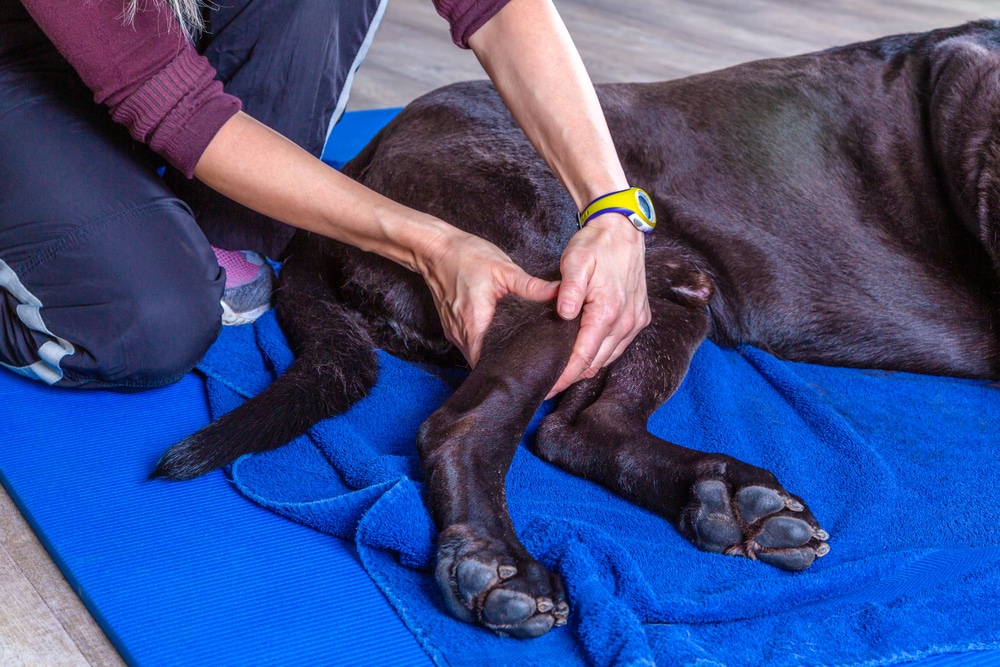
Canine Osteosarcoma is a malignant bone tumor. It is a type bone cancer that usually starts on the dog’s arm and leg bones and can quickly spread to the rest of the dog’s skeletal system.
Furthermore, it is the most aggressive bone cancer in dogs. Almost 10,000 dogs each year are diagnosed with this cancer.
What Causes Canine Osteosarcoma?
The primary and definitive cause of canine osteosarcoma is still unknown. However, researches and debates suggest different factors that can cause this type of bone cancer.
One of the most common factors contributing to this disease is the dog breed. Like other Great Dane health problems, canine osteosarcoma is usually found in large dog breeds. And it is common for Great Danes around 5 to 7 years old to develop this disease. However, Great Danes below 3 years old can also be affected.
Other probable causes include the effect of spaying or neutering at an early age (usually before they reach 1 year old). Though some studies suggest otherwise.
Some veterinarians also believe that injuries to the bones increase the risk of canine ocsteosarcoma in Great Danes. They suggest that bone fractures or infections require more cell turnover in order to fully heal.
Symptoms of Osteosarcoma
Among all Great Dane health problems mentioned so far, canine osteosarcoma might be the most difficult to detect with the naked eye alone. Signs and symptoms are not as straightforward as previously mentioned problems.
However, there are still common signs and symptoms you should look out for. And these are:
- Swelling or lumps growing on a limb or on different parts of the body
- Lameness
- Joint pain
- Loss of appetite
- Fatigue
- Reluctance to play and/or exercise
Prevention
Since the signs and symptoms of this type of bone cancer cannot be detected by the naked eye alone, it is important to get an X-ray of the suspected site as soon as you can.
X-rays might not be 100% accurate in detecting canine osteosarcoma but they are a great first step to diagnosing and preventing the disease from spreading.
Treatment
In almost all cases of canine osteosarcoma treatment, the safest and most viable option is amputation of the infected limb. This helps prevent the further spread of the cancer to the rest of the Great Dane’s skeleton.
While Great Dane owners find this treatment unpleasant and unsettling, most dogs are very good at handling surgeries. Furthermore, amputation helps relieve the extreme pain Great Danes feel due to the bone tumor that pain medication alone cannot provide.
Other treatment options also include palliative therapy like radiation therapy and chemotherapy. These help kill cancer cells and shrink tumors.
5. Addison’s Disease
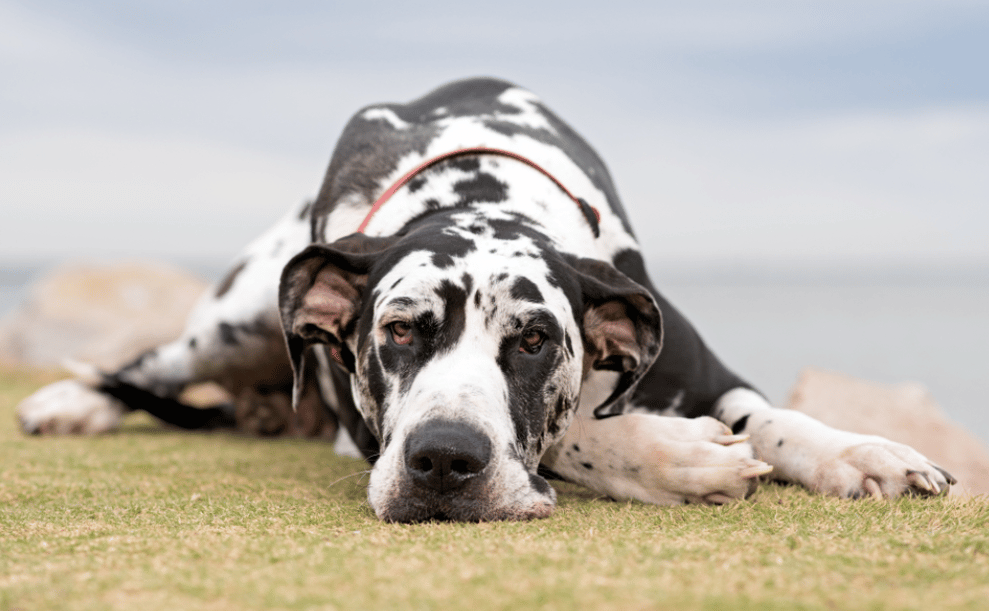
Addison’s disease, also known as hypoadrenocorticism, happens when the Great Dane’s adrenal glands fail to produce hormones such as mineralocorticoids and glucocorticoids.
This means that there is not enough hormones produced to maintain and control protein, sugar and fat metabolism, sodium, and potassium. Furthermore, the body doesn’t get to produce enough “stress” hormones.
Among all the Great Dane health problems mentioned so far, Addison’s disease might be the most uncommon. It is actually considered a rare disease that can be fatal, if left untreated.
What Causes Addison’s Disease?
A lot of factors can cause Addison’s disease in Great Danes. And the causes can differ based on the type of hypoadrenocorticism.
- Primary hypoadrenocorticism. This is when the adrenal glands “die”. There is no definitive cause for this but medications such as ketoconazole, trilostane, and lysodren can contribute to it.
- Secondary hypoadrenocorticism. This happens due to the destruction of the pituitary gland that is caused by neoplasia, inflammation or head trauma.
Other than abovementioned causes, it is worth noting that this disease is common in young to middle-aged female Great Danes.
Symptoms of Addison’s Disease
Addison’s Disease is referred to as “The Great Pretender”. This is because there is a wide range of signs and symptoms and they often look like symptoms of other diseases.
See below list of signs and symptoms to watch out:
- Weight loss
- Lack of appetite
- Vomiting
- Diarrhea
- Lethargy
- Dehydration
- Weakness
- Depression
- Bloody stool
- Increased urination or thirst
- Shaking
- Hyperpigmentation of the skin
- Abdominal pains
Prevention
Primary hypoadrenocorticism is difficult to prevent because there is no known cause. However, secondary hypoadrenocorticism may be prevented by carefully monitoring your Great Dane while it is on medication.
If you suspect Addison’s disease on your Great Dane, it’s best to go to the vet right away so they can run tests on your dog.
Treatment
Treatments for Addison’s disease focuses on insistent IV fluid therapy, injectable steroids and other oral medications. Thankfully, most dogs diagnosed with Addison’s disease respond well to treatment and return to a normal life.
Depending on the severity of the disease and your Great Dane’s diagnosis, they will need to be hospitalized. However, the most important treatment for Addison’s is the replacement of hormones. This is done through administering oral medication or through injectable steroids.
You can always work out the best and most suitable plan with your vet to treat Addison’s disease.
6. Wobbler Syndrome
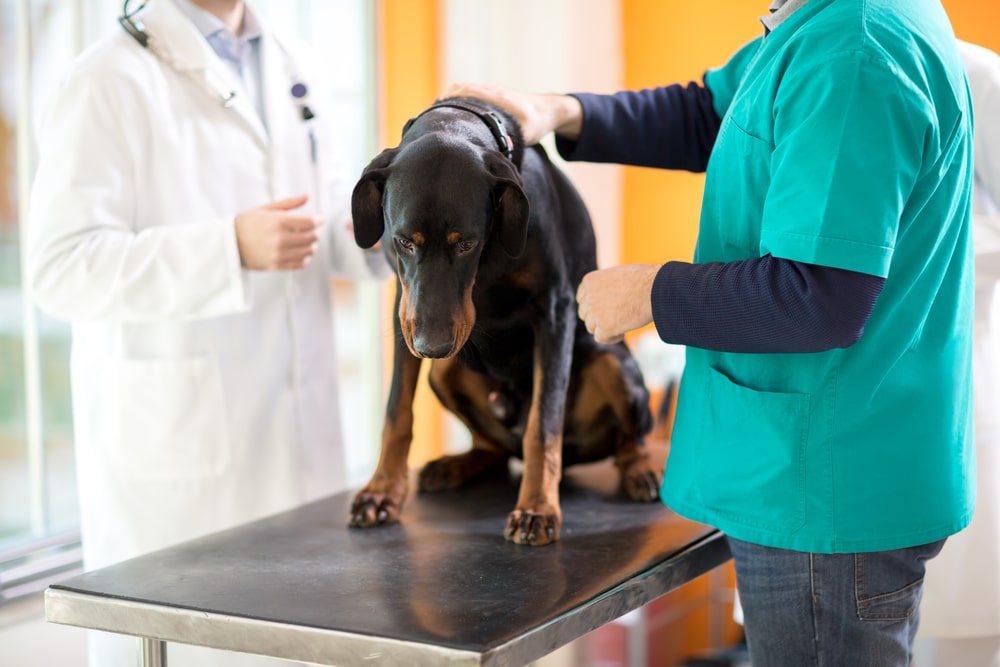
Wobbler Syndrome, also known as “cervical spondylomyelopathy”, is a disease where a dog experiences compression of the cervical spinal cord (located around the dog’s neck area).
It is a common disease that causes neurological disability in large breed dogs such as the Great Dane and the Doberman Pinscher.
What Causes Wobbler Syndrome?
Like other Great Dane health problems mentioned, the definitive cause of Wobbler Sydndrome is also unknown. However, there are a few suspected factors that cause the disease.
- Diet type. Some studies suggest that high calcium, protein and caloric diets can make puppies grow a lot faster. When puppies grow a lot faster than usual, the quick changes that happen to their skeleton can affect a dog’s spinal cord.
- Breed. As mentioned above, Wobbler Syndrome is more common in large breed dogs. According to a research, 80% of dogs that get diagnosed with the disease are Great Danes and Doberman Pinschers.
Symptoms of Wobbler Syndrome
Symptoms of the disease usually appear at a young age and will slowly progress as the dog grows old. However, there are also times where the disease suddenly appears.
Wobbling is the most obvious symptom. But you also need to watch out for:
- Stiff neck
- Incoordination
- Reduced stride
- Weakness
- Problem getting up or laying down
- Difficulty walking
- Scuffing nails
Prevention
There are no specific ways to prevent the onset Wobbler Syndrome because the primary cause is unknown and not fully understood.
However, if you see any signs of the disease in your Great Dane, the best way to deal with it is to immediately bring your dog to the vet. This is because in severe cases and when left untreated, Wobbler Syndrome can cause paralysis in all four legs.
Treatment
Treating the Wobbler syndrome can be done medically or surgically. For mild cases, anti-inflammatory and pain medications, reduction or restriction in movements and a neck brace can treat the disease.
For severe cases or when mild cases do not show improvement even when abovementioned treatments were done, surgery is what the vet will recommend.
Surgery aims to remove the pressure from the Great Dane’s spinal cord. And this treatment method usually has the higher success rate compared to medical alternatives.
Either way, you will need to visit the vet to determine the best treatment option for your Great Dane.
Conclusion
A healthy lifestyle is always key to preventing a lot of Great Dane health problems. A Great Dane, like all other living creatures, require love, care, attention, and proper nutrition. And it is a fur parent’s responsibility to make sure their Great Dane lives in a safe and healthy environment and that all needs are met.
If you ever detect any early signs of the Great Dane health problems mentioned in this article, the best way to deal with it is to seek veterinary attention.
Great article. Our GD has had difficulty with getting up and walking steadily for the past month, it came on quite suddenly and is not getting better. Our vet, after 2 visits, couldn’t find a problem and has put her on an anti inflammatory with a pain medication. It helps temporarily but does wear off. After about 4-6 hours. I’m looking for a different vet now who will listen and take the time to do a thorough examination on her.